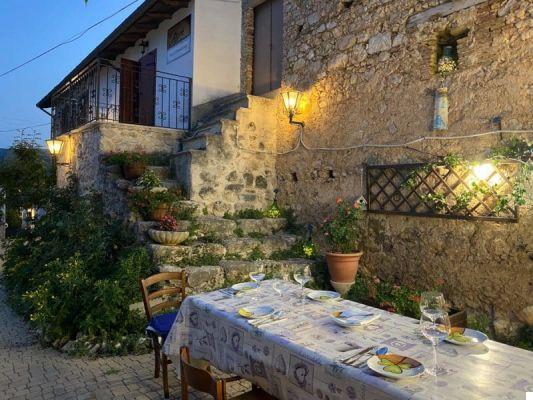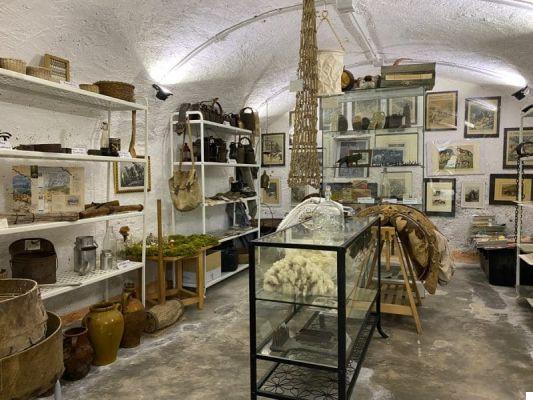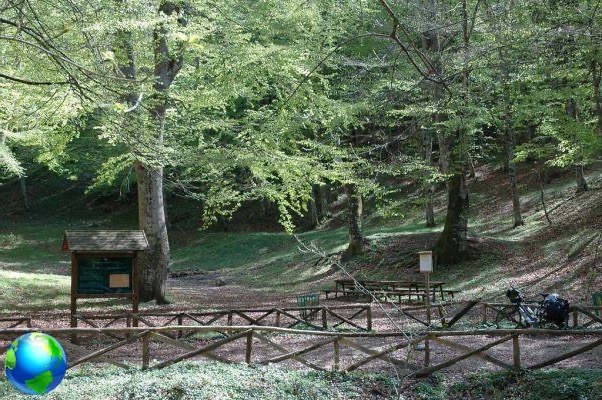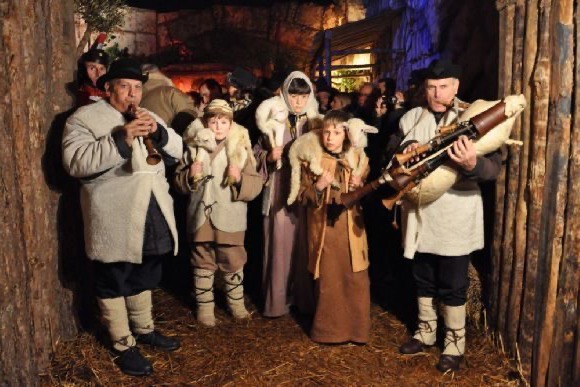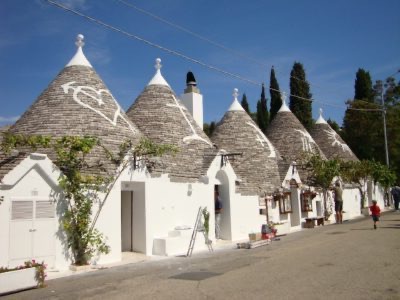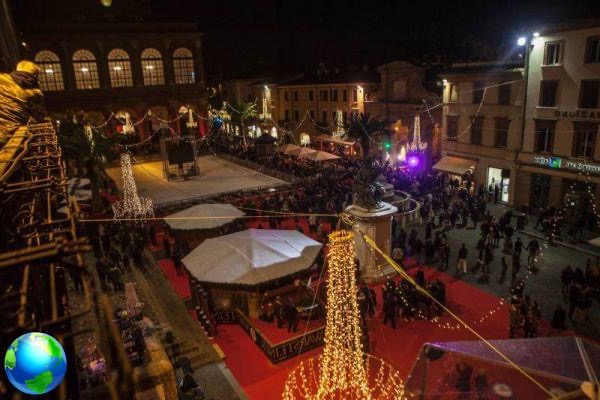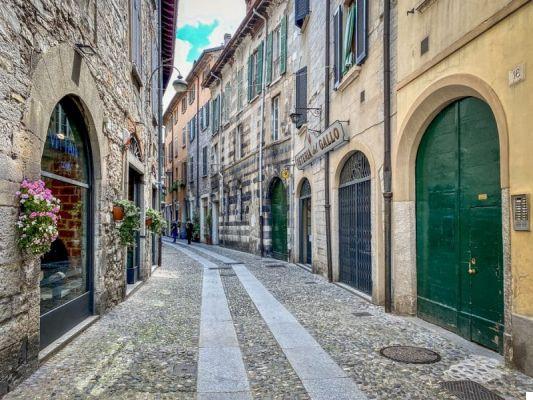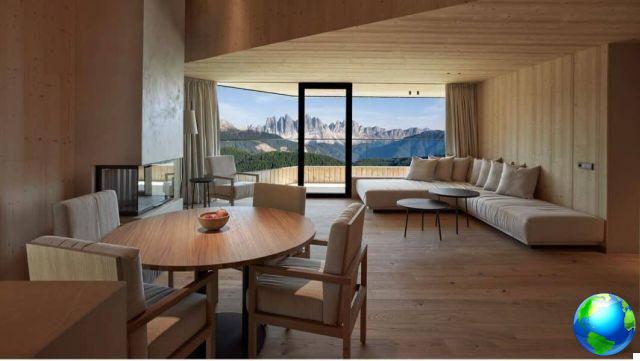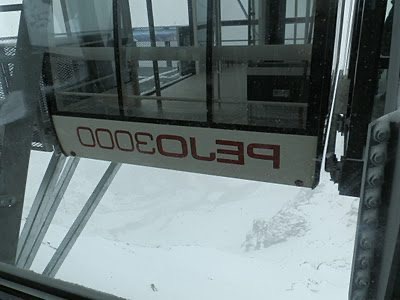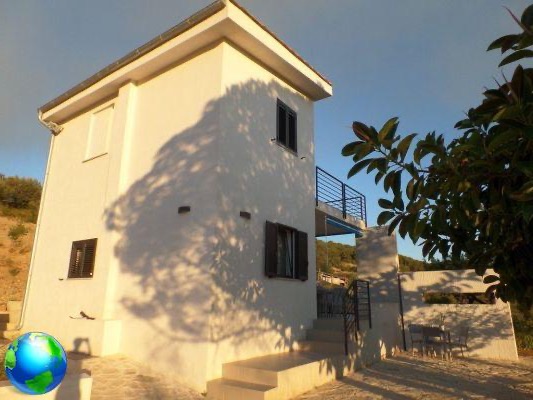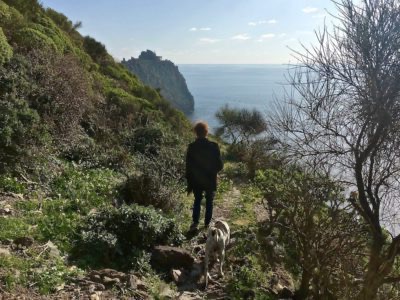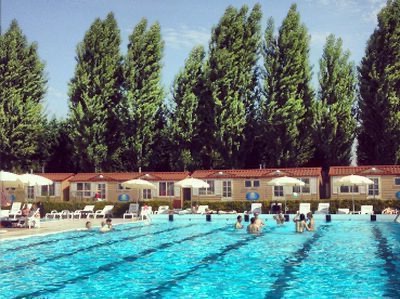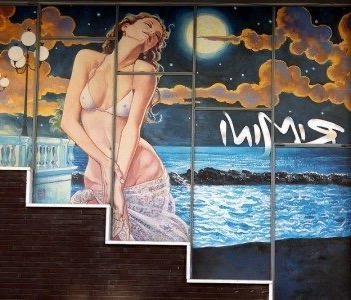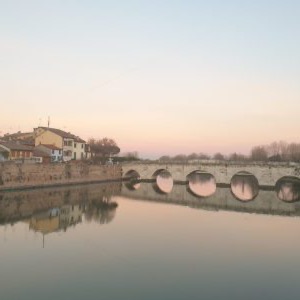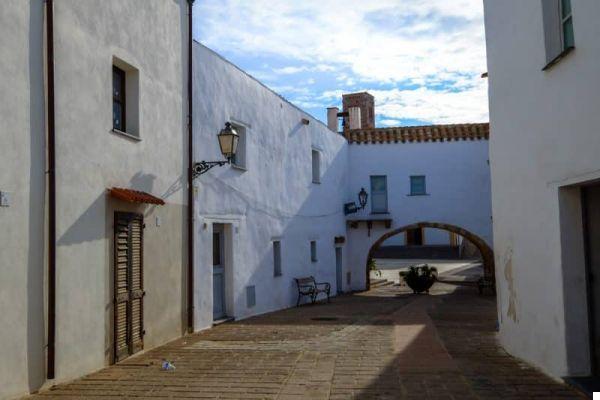Abruzzo, at least until a couple of years ago, was one of the least known regions of Italy (second only to Molise, at least in my perception), and it was really a shame because it boasts a naturalistic, historical and architectural heritage of inestimable value. Fortunately, things have changed in recent times and many people have noticed the existence of this record-breaking region. Abruzzo is in fact the "greenest region in Europe", thanks to the presence of 3 national parks (the National Park of Abruzzo, Lazio and Molise, the Majella National Park and the Gran Sasso and Monti della Laga National Park), the Sirente - Velino Regional Natural Park, the Torre del Cerrano Marine Protected Area and the 38 protected areas that represent almost 40% of its total surface, the highest in Europe. Suffice it to say that within its protected areas, over 75% of the animal and plant species of the European continent are preserved! But the records do not end there, Abruzzo is also the 2nd Italian region with the highest number of villages included in the club of "Most beautiful villages in Italy”, It has 23. Beyond the numbers, which are valid but up to a certain point, it is a region that has a lot to offer. Although I do not have Abruzzo origins, like many Romans I have been coming to Abruzzo practically since I was born, it is a region that I love very much and I would like it to be better known because it really deserves it.
Not being able to write an article on the entire region (it would become a treaty), I decided to 'break up' the territory into several articles by telling you about the areas I know best: the Gran Sasso National Park, Ovindoli and the Sirente-Velino Regional Natural Park. , Sulmona and the Majella National Park and the area around Lake Scanno.
Sociological NOTE: according to ISTAT, Abruzzo is one of the Italian regions with the lowest mortality rate from cancer, with lower greenhouse gas emissions per inhabitant, with greater consumption of electricity produced from renewable sources and with less inequality in the distribution of income.
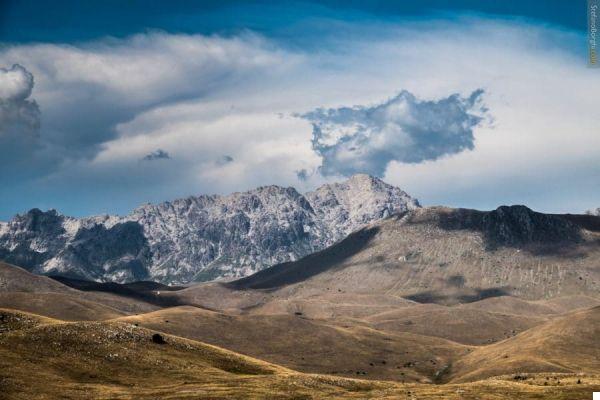
What to see in the Gran Sasso National Park
Campo Imperatore and the Gran Sasso d'Italia
The first thing to see in the Gran Sasso National Park is definitely Campo Imperatore, the magnificent plateau at the foot of the Gran Sasso, with the highest peak of the Apennines (Corno Grande, 2912 mt). From its summit, on clear days, you can see both the Tyrrhenian and the Adriatic. Campo Imperatore is about 20 km long and is located at an altitude between 1500 and 1900 meters. Its large pastures are used in summer, for the mountain pastures, by herds of sheep, cows and horses who, in winter, are accompanied by shepherds in Puglia along the royal tratturo, following a millenary tradition. Here we are in the wildest area of Abruzzo and one of the wildest in Italy, where rural traditions mix with mountain ones. The northwestern part of Campo Imperatore is called Valloni area, and is the highest. Here is the arrival of the Gran Sasso d'Italia cable car (which starts from Fonte Cerreto) and from here the lifts of the Gran Sasso area start. In the square you will also see the old man Campo Imperatore hotel, built in 1934 in a rationalist style (now in ruins) theAstronomical Observatory (at 2150 meters above sea level it is the highest in Italy) and theLo Zio Hostel (the highest in Europe, housed in the structure of the old cable car). From here there are countless paths that reach all the peaks of the massif, the Duca degli Abruzzi Refuge (2388 mt) and the Garibaldi Refuge (2230 mt). The opposite side of Campo Imperatore is called Fonte Vetica and is a very famous area for barbecues. A stop at Mucciante Refreshment is a must !!! Here you can choose the meat you prefer (kebabs in the first place!) And cook it on the many braziers that are out there. A curiosity: the Mucciante restaurant was created from a Texaco motorway restaurant set up to shoot scenes from the film “Autostop Rosso Sangue”.
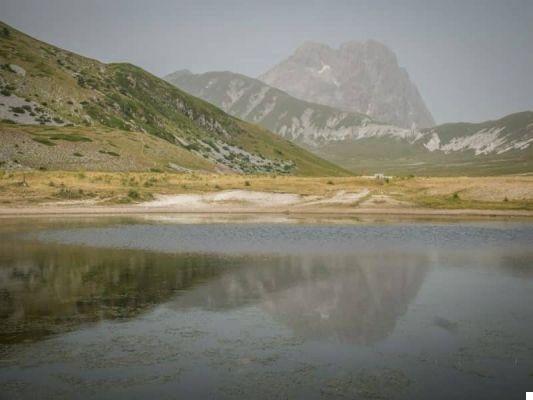
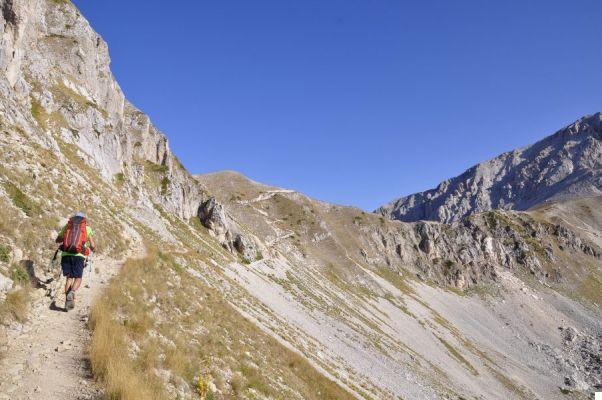
Rocca Calascio: Lady Hawke's castle
In addition to the many natural beauties, inside the Gran Sasso National Park there are also several really beautiful and evocative villages. The most famous is Rocca Calascio, an almost magical place. This fortress is located at 1500 meters above sea level and is dominated by the ruins of a castle, an ancient tower fortification dating back to the early Middle Ages which represented the highest part of a system of sighting points for the control of the territory. The castle is spectacular especially for the place where it is located, dominating a breathtaking landscape between heaven and earth that has made it a film set for several medieval films, including among all "Lady Hawke” e "The Name of The rose" and the splendid “The Bride's Journey” which contributed to making him famous all over the world. It has been abandoned for many years, now slowly various restoration interventions are being carried out on the buildings of the village below the castle, there is a nice building hotel (the Rifugio della Rocca), a bar and two restaurants. The volunteers of the New Acropolis of L'Aquila also take care, in the summer period, of the ordinary maintenance of the castle and undertake to keep it open for those who want to visit the interior, go up to the terrace and wander over the surrounding area with their eyes. , from the Gran Sasso to Sulmona and beyond. If the sky is clear, the view of the horns of the Gran Sasso from here literally takes your breath away! From Rocca Calascio you can then take several walks immersed in a still uncontaminated nature; above all, the one that reaches the village of Santo Stefano di Sessanio (see below) is very beautiful.
Note: the road to reach the castle is narrow and full of hairpin bends, and once at the base, there are few parking spaces. Try to go up but, in most cases it will be better to park in the town of Rocca Calascio and go up on foot or by shuttle (which are available only in high season though). In general, avoid Sundays and holidays.
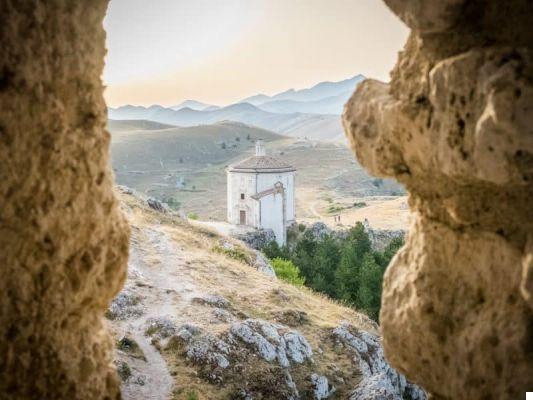
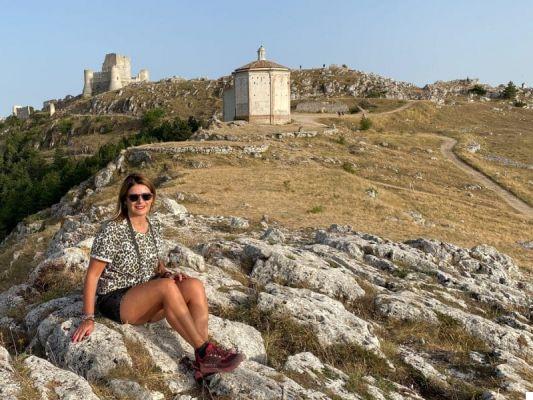
S. Stefano di Sessanio
Less than 10 km from Rocca Calascio, still within the Gran Sasso National Park, there is another jewel of Abruzzo where time seems to have stopped: I am talking about the village of Santo Stefano di Sessanio, one of the 'Most beautiful villages in Italy'. It is located at an altitude of 1250 meters and still retains historical and architectural features from the Middle Ages, when it was a fief of the Medici of Florence. From the architectural point of view it has an original spindle structure and the streets spiral up, without however losing the typical characteristics of the medieval village, dominated by the crenellated, cylindrical tower (2009th-XNUMXth century, unfortunately collapsed due to the XNUMX earthquake ). The village is made up of narrow and winding streets, with covered passages and steep stairways, overlooked by simple fifteenth-century stone houses and Renaissance buildings. A unique entrepreneurial intervention has almost completely recovered its image and enhanced its historical architectural heritage to make it one building hotel wonderful (the Sextantio, 29 rooms scattered throughout the village inspired by the photographs that Paul Scheuermeier, a Swiss linguist who took in Abruzzo in the 20s). After the Sextantio, other b & bs, bars, restaurants and shops have arrived that sell typical products. From Santo Stefano you can make interesting excursions to Monte Cafanello (m.1557) and to Campo Imperatore, on the top of the Gran Sasso.
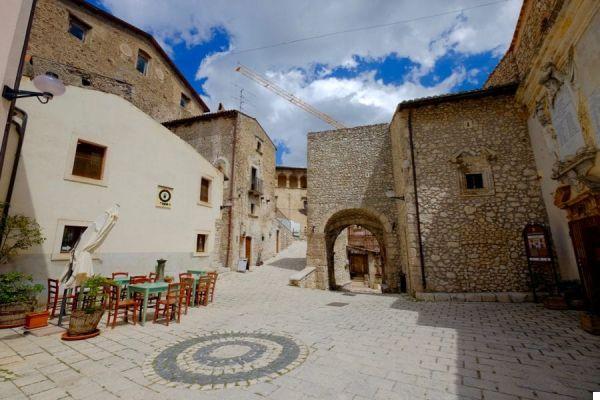
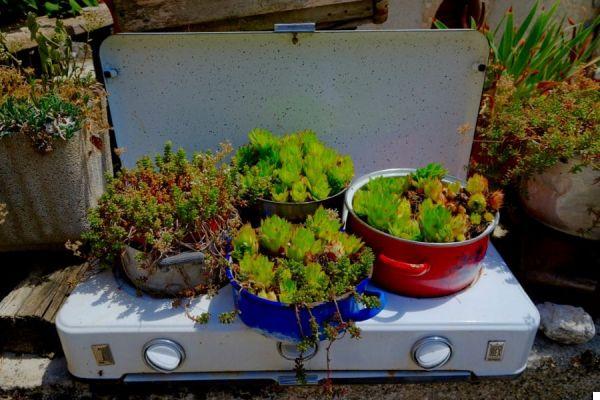
Tirino Valley: the cleanest river in Italy
The valley at the base of Rocca Calascio and Santo Stefano di Sessanio is the Tirino Valley, whose name derives from the homonymous river. The Tirino is the cleanest river in Italy and comes from the aquifer system of Campo Imperatore, on the Gran Sasso. From the mountain, the water flows underground for about 25 km and comes out to the surface in three different points (near Capestrano) which constitute the springs of the Tirino. Thanks to this, the river maintains a constant level and temperature throughout the year. The temperature is around 11 ° C, that is, it is freezing, but the color and transparency of the water are something incredible! The 16 km of the river are almost all navigable and it is possible to do it by kayak or canoe thanks to the excursions organized by Il Bosso Cooperative.
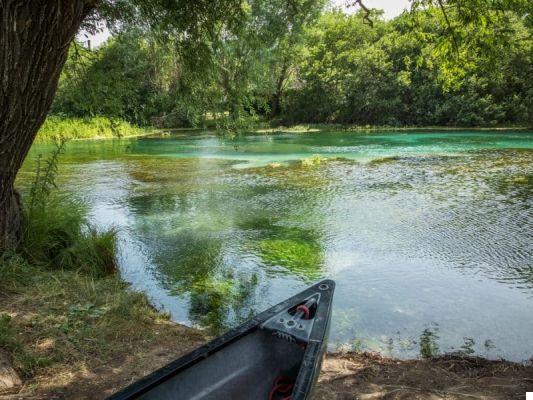
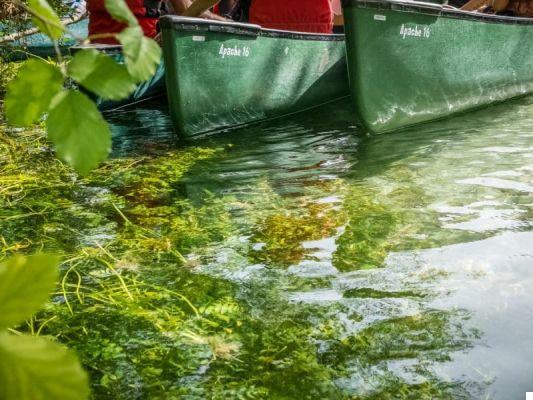
Sinizzo Lake and Stiffe Caves
Two other places not to be missed within the Gran Sasso National Park are the Sinizzo lake and the Stiffe caves. The first is located not far from Santo Stefano di Sessanio, near San Demetrio nè Vestini. We are talking about a small karst lake (for swimming!) Fed by two sources of drinking water (one of these gives the lake its name) whose water color is simply spectacular. Very popular in summer by L'Aquila, but not only, it is a well-kept lake and is a real oasis of peace where you can relax and cool off. There is a kiosk, a picnic area with bbq, bathrooms and games for children. 7 km from the lake, still within the Gran Sasso National Park, the caves of Stiffe. Open all year round, they offer suggestive scenarios that open up between stalactites, stalagmites and waterfalls (in the period from November to April, due to uncertain weather conditions, it is always advisable to call in advance).
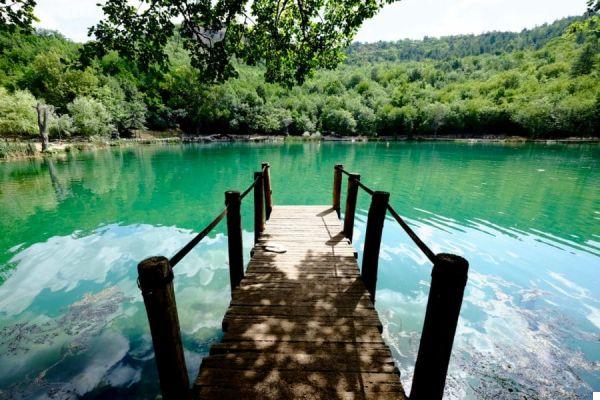
Where to sleep in the Gran Sasso National Park
- B&B Storie d'Abruzzo (Villa Santa Lucia degli Abruzzi): I slept in this very welcoming b & b located near Ofena, in a small village surrounded by nature. The location is very convenient for visiting the whole area (the Tirino is at 15 ', Rocca Calascio and S. Stefano at 30' and Campo Imperatore at 1h). In the structure there is also a small museum of sheep farming and the wolf that exhibits ancient artifacts and period documents.
- Lo Zio Hostel (Campo Imperatore): the highest hostel in Europe (located at an altitude of 2250 meters) housed in the structure of the old cable car, which was disused in 1988 and redeveloped. Perfect if you intend to dedicate yourself to trekking and walking on the peaks of the Gran Sasso.
- Sextantio Albergo Diffuso (Santo Stefano di Sessanio): a very suggestive boutique hotel consisting of 29 rooms scattered around the village and inspired by the photographs that Paul Scheuermeier, a Swiss linguist, took in Abruzzo in the 20s.
- Rocca Refuge (Rocca Calascio): a widespread hotel with rooms and apartments located just below the Rocca di Calascio with a restaurant that offers a menu made of local organic products and a selection of the best Abruzzo and Italian wines.
